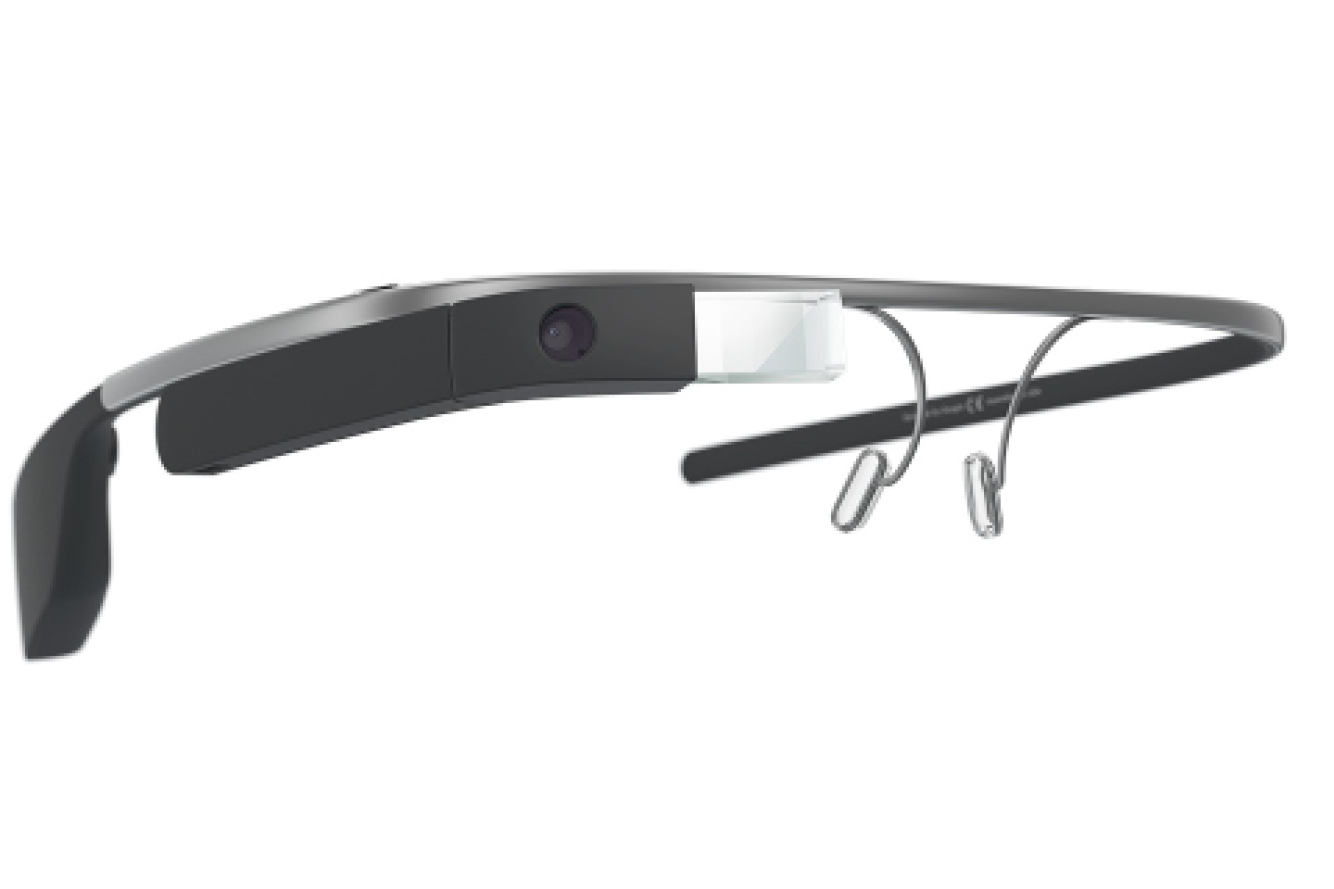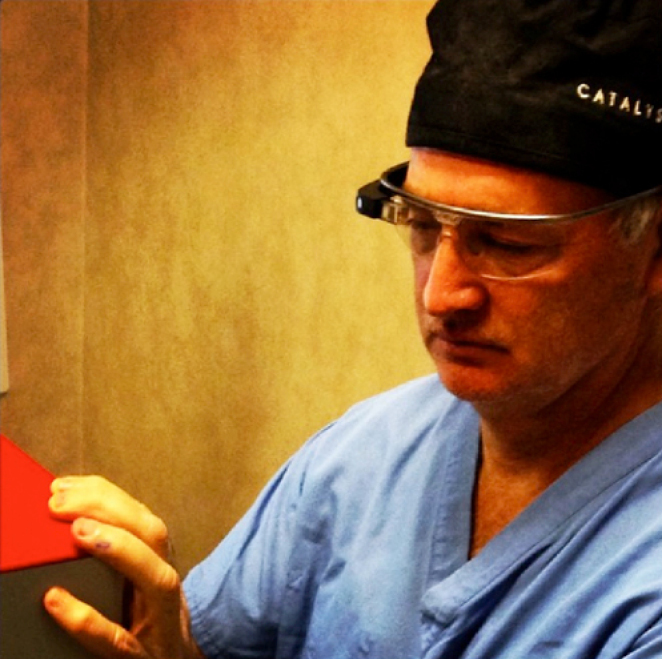Google Glass is an Android-powered headset that links up with the wearer’s smartphone, allowing him or her to see alerts and run apps without the inconvenience of looking down at a handheld device. According to Google, the fundamental questions behind the development of the technology were: (1) Can technology be something that frees us up and keeps us in the moment, rather than taking us out of it? and (2) Can it help us look up and out at the world around us, and the people who share it with us?1 Google Glass aims to do just that.

Glass is a lightweight, wearable technology that users can customize with different shades, frames, and earbuds.
BECOMING AN EXPLORER
Initially launched in 2012 to a select group of “Explorers,” Google offered the device, still in beta mode, in May 2014 to the public for $1,500. As a huge proponent of technology and its benefits in medicine, I eagerly applied for the Google Glass Ambassador/Explorer program and received my headset in April 2014, a month before the general release.
I opted to utilize the glasses during a femtosecond laser cataract procedure so that I could show my patients what I see during their surgery. I was pleasantly surprised by the quality and clarity of the images produced. I have found practical applications in my practice for Glass with respect to patient education, marketing, and perhaps training purposes down the road. I have recorded several surgeries and utilized the footage for patient education on my website, on Eyetube, and on my practice’s Facebook page. This helps prepare patients and shows them what their surgery will involve from my perspective. My next OR project will be to have a technician wear the glasses and record what I am doing for a “total access” training situation.
With the aid of Google Glass Dr.Silverman can demonstrate what a femtosecond laser cataract procedure looks like while he is performing surgery.

Dr.Silverman performing femtosecond laser cataract surgery while wearing Google Glass.
POTENTIAL CLINICAL BENEFITS
I believe that Google Glass is a novel concept; however, the device is currently not particularly beneficial for cataract surgery in a clinical situation, primarily due to the camera positioning. The camera is positioned just outside the direct line of sight, blocking its view once I put my eyes up to the microscope. I do envision great benefit from this device for general or plastic surgeons in a telemedicine scenario. The technology would be especially useful in a situation in which a doctor requires real-time conferencing support from an expert for a consult or during difficult procedures performed in remote areas or on-the-fly situations.
SUMMARY
Although I do not have plans to incorporate Google Glass into my regular clinical activities as a surgeon at this time, I have enjoyed participating in the Explorer aspect of the device, and I certainly put it to good use during my recent travels to Portugal!
1. Ross I. A letter to our Glass Explorers, from the head of Glass. Google Glass. May 15, 2014. Available at: https://plus.google.com/u/0/+GoogleGlass/posts. Accessed July 15, 2014.

